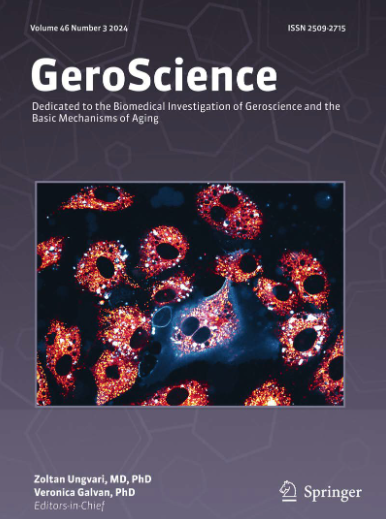Social frailty and mortality risk in middle-aged and older adults: a prospective cohort study.
IF 5.4
2区 医学
Q1 GERIATRICS & GERONTOLOGY
引用次数: 0
Abstract
Social frailty is common and associated with several adverse outcomes in older adults. However, its prevalence and effects on mortality in younger populations and the underlying cause of mortality are poorly understood. To examine the association of social frailty with all-cause and cause-specific mortality in adults across a wide age spectrum, we used data from the UK Biobank, a prospective cohort included 421,644 individuals aged 37-73 years enrolled from 2006 to 2010. Social frailty status was assessed based on Bunt's concept (financial difficulty, live alone, less social activity and rarely contacts with friends/family). The prevalence of pre-social frailty and social frailty were 35.74% and 19.87%, respectively, indicating that more than half of the participants were at risk of cumulative depletion of essential social resources. Both pre-social frailty and social frailty were associated with higher risk of all-cause and cause-specific mortality (including malignant neoplasms, heart disease, cerebrovascular diseases, respiratory diseases, diabetes mellitus, and others caused) in adults across a wide age spectrum, independent of sociodemographic factors, lifestyles, chronic diseases, mental health, and physical frailty status. These findings indicate that social frailty, as a robust and multidimensional construct, effectively captures the risk of losing social resources. Thus, assessing and addressing social frailty can reduce mortality risk.中老年人的社会脆弱性与死亡风险:一项前瞻性队列研究。
社会脆弱在老年人中很常见,并与几种不良后果有关。然而,人们对其在年轻人群中的流行程度和对死亡率的影响以及死亡的根本原因了解甚少。为了研究社会脆弱与广泛年龄范围内成人全因和特定原因死亡率的关系,我们使用了来自英国生物银行的数据,该前瞻性队列包括2006年至2010年登记的421,644名37-73岁的个体。社会脆弱状态是根据Bunt的概念评估的(经济困难,独居,社交活动较少,很少与朋友/家人联系)。前社会脆弱和社会脆弱的患病率分别为35.74%和19.87%,表明超过一半的参与者面临基本社会资源累积枯竭的风险。在广泛的年龄范围内,与社会人口因素、生活方式、慢性病、心理健康和身体虚弱状态无关,社会前脆弱和社会脆弱都与全因和特定原因死亡率(包括恶性肿瘤、心脏病、脑血管疾病、呼吸系统疾病、糖尿病和其他疾病)的高风险相关。这些发现表明,社会脆弱性作为一个强大的多维结构,有效地捕捉了失去社会资源的风险。因此,评估和解决社会脆弱性问题可以降低死亡风险。
本文章由计算机程序翻译,如有差异,请以英文原文为准。
求助全文
约1分钟内获得全文
求助全文
来源期刊

GeroScience
Medicine-Complementary and Alternative Medicine
CiteScore
10.50
自引率
5.40%
发文量
182
期刊介绍:
GeroScience is a bi-monthly, international, peer-reviewed journal that publishes articles related to research in the biology of aging and research on biomedical applications that impact aging. The scope of articles to be considered include evolutionary biology, biophysics, genetics, genomics, proteomics, molecular biology, cell biology, biochemistry, endocrinology, immunology, physiology, pharmacology, neuroscience, and psychology.
 求助内容:
求助内容: 应助结果提醒方式:
应助结果提醒方式:


